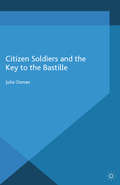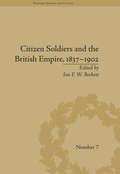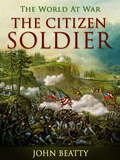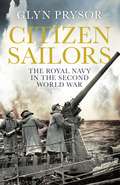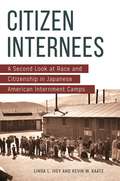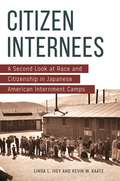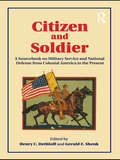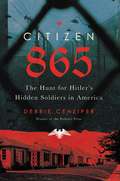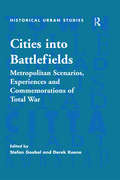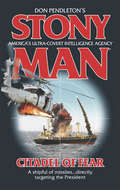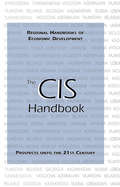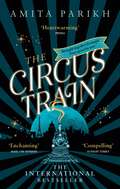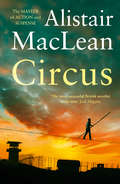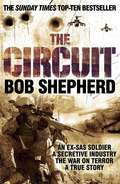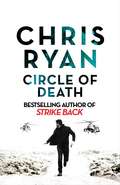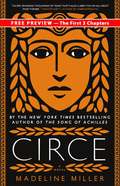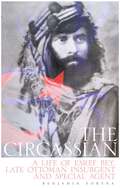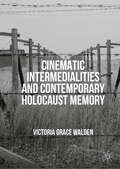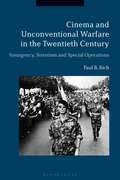- Table View
- List View
Citizen Soldiers and the Key to the Bastille (War, Culture and Society, 1750-1850)
by Julia OsmanShowcasing French participation in the Seven Years' War and the American Revolution, this book shows the French army at the heart of revolutionary, social, and cultural change. Osman argues that efforts to transform the French army into a citizen army before 1789 prompted and helped shape the French Revolution.
Citizen Soldiers and the British Empire, 1837–1902 (Warfare, Society and Culture)
by Ian F BeckettThe British amateur military tradition of raising auxiliary forces for home defence long preceded the establishment of a standing army. This was a model that was widely emulated in British colonies. This volume of essays seeks to examine the role of citizen soldiers in Britain and its empire during the Victorian period.
Citizen Soldiers and the British Empire, 1837–1902 (Warfare, Society and Culture #7)
by Ian F BeckettThe British amateur military tradition of raising auxiliary forces for home defence long preceded the establishment of a standing army. This was a model that was widely emulated in British colonies. This volume of essays seeks to examine the role of citizen soldiers in Britain and its empire during the Victorian period.
The Citizen-Soldier: Or; Memoirs Of A Volunteer (The World At War)
by John BeattyJohn Beatty (December 16, 1828 – December 4, 1914) was an American banker and statesman from Sandusky, Ohio. He served as a brigadier general in the Union Army during the American Civil War. (Excerpt from Wikipedia)
Citizen Sailors: The Royal Navy in the Second World War
by Glyn Prysor'The deck and the bridge were pointing to the sky at an alarming angle and our thoughts were to get the devil out of it and into the water. Almost in unison we shouted "for God's sake jump boys".'Citizen Sailors is a groundbreaking people's history of the Royal Navy in the Second World War. Drawing on hundreds of contemporary diaries and letters, along with memoirs, oral history and official documents, Glyn Prysor tells the human story of Britain's war at sea.The sailors of the Royal Navy fought from the very first day of the war until the very last. They played a vital part in a truly global war, from America to Australia and from the Arctic to South Africa. They fought in every conceivable vessel: vast aircraft carriers and cramped corvettes, fast motor boats and rickety minesweepers, Swordfish biplanes and ageing submarines. Seen through the eyes of sailors themselves, this is a compelling account of life in the wartime Royal Navy: humanity and horror, triumphs and tragedies, nerve-wracking convoys and epic gun battles, devastating aerial bombardment and swashbuckling amphibious landings. Citizen Sailors puts the Royal Navy and its sailors back at the heart of the story of Britain's Second World War.
Citizen Internees: A Second Look at Race and Citizenship in Japanese American Internment Camps
by Linda L. Ivey Kevin W. KaatzThrough a new collection of primary documents about Japanese internment during World War II, this book enables a broader understanding of the injustice experienced by displaced people within the United States in the 20th century.In the 1940s, Japanese and Japanese American internees of Redwood City, CA, had a dedicated ally: J. Elmer Morrish, a banker who kept their businesses alive, made sure their taxes were paid, and safeguarded their properties until after the end of World War II and the internees were finally released. What were Morrish's motivations for his tireless efforts to help the internees? How did the unjustly incarcerated deal with the loss of freedom in the camps, and how did they envision their future? And how did the internees both cooperate with the U.S. government and attempt to resist victimization?Citizen Internees: A Second Look at Race and Citizenship in Japanese American Internment Camps is an edited selection from a collection of more than 2,000 pieces of correspondence—some of which is previously unpublished—regarding the internment of Japanese and Japanese Americans from Redwood City, CA. These primary source documents reveal the experiences and emotions of a group of imprisoned people attempting to run the necessary day-to-day tasks of the lives they were forced to leave behind—as property owners, taxpayers, and proprietors. Through these letters about practical matters, readers can gain insight into the internees' changing family relations, their financial concerns, and their struggles in making decisions about an uncertain future. The book also includes essays that supply background information, analysis of the documents' contents and meaning, and historical context.
Citizen Internees: A Second Look at Race and Citizenship in Japanese American Internment Camps
by Linda L. Ivey Kevin W. KaatzThrough a new collection of primary documents about Japanese internment during World War II, this book enables a broader understanding of the injustice experienced by displaced people within the United States in the 20th century.In the 1940s, Japanese and Japanese American internees of Redwood City, CA, had a dedicated ally: J. Elmer Morrish, a banker who kept their businesses alive, made sure their taxes were paid, and safeguarded their properties until after the end of World War II and the internees were finally released. What were Morrish's motivations for his tireless efforts to help the internees? How did the unjustly incarcerated deal with the loss of freedom in the camps, and how did they envision their future? And how did the internees both cooperate with the U.S. government and attempt to resist victimization?Citizen Internees: A Second Look at Race and Citizenship in Japanese American Internment Camps is an edited selection from a collection of more than 2,000 pieces of correspondence—some of which is previously unpublished—regarding the internment of Japanese and Japanese Americans from Redwood City, CA. These primary source documents reveal the experiences and emotions of a group of imprisoned people attempting to run the necessary day-to-day tasks of the lives they were forced to leave behind—as property owners, taxpayers, and proprietors. Through these letters about practical matters, readers can gain insight into the internees' changing family relations, their financial concerns, and their struggles in making decisions about an uncertain future. The book also includes essays that supply background information, analysis of the documents' contents and meaning, and historical context.
Citizen and Soldier: A Sourcebook on Military Service and National Defense from Colonial America to the Present
by Henry C. Dethloff Gerald E. ShenkAmericans grow up expecting that in a time of need, their country can depend on its people for volunteer service to the military. Indeed, this has been a social and at times legal expectation for the citizenship of this country since 1776. Yet, since the end of World War II United States forces have been caught up in many long term military engagements, and the military aspect of citizenship has become an increasingly marginalized one in a world where only a minority of citizens even vote. Citizen and Soldier: A Sourcebook on Military Service and National Defense from Colonial America to the Present provides a useful framework and supporting documentary evidence for an informed discussion of the development of the American ideal of the "Citizen Soldier". Presented with insightful introductions and useful discussion questions, this concise collection of 27 primary documents takes a close look at the United States military and shows how it became entwined with the rise of American national identity.
Citizen and Soldier: A Sourcebook on Military Service and National Defense from Colonial America to the Present
by Henry C. Dethloff Gerald E. ShenkAmericans grow up expecting that in a time of need, their country can depend on its people for volunteer service to the military. Indeed, this has been a social and at times legal expectation for the citizenship of this country since 1776. Yet, since the end of World War II United States forces have been caught up in many long term military engagements, and the military aspect of citizenship has become an increasingly marginalized one in a world where only a minority of citizens even vote. Citizen and Soldier: A Sourcebook on Military Service and National Defense from Colonial America to the Present provides a useful framework and supporting documentary evidence for an informed discussion of the development of the American ideal of the "Citizen Soldier". Presented with insightful introductions and useful discussion questions, this concise collection of 27 primary documents takes a close look at the United States military and shows how it became entwined with the rise of American national identity.
Citizen 865: The Hunt for Hitler's Hidden Soldiers in America
by Debbie CenziperThe gripping story of a team of Nazi hunters at the U.S. Department of Justice as they raced against time to expose members of a brutal SS killing force who disappeared in America after World War Two.In 1990, in a drafty basement archive in Prague, two American historians made a startling discovery: a Nazi roster from 1945 that no Western investigator had ever seen. The long-forgotten document, containing more than 700 names, helped unravel the details behind the most lethal killing operation in World War Two. In the tiny Polish village of Trawniki, the SS set up a school for mass murder and then recruited a roving army of foot soldiers, 5,000 men strong, to help annihilate the Jewish population of occupied Poland. After the war, some of these men vanished, making their way to the U.S. and blending into communities across America. Though they participated in some of the most unspeakable crimes of the Holocaust, "Trawniki Men" spent years hiding in plain sight, their terrible secrets intact.In a story spanning seven decades, Citizen 865 chronicles the harrowing wartime journeys of two Jewish orphans from occupied Poland who outran the men of Trawniki and settled in the United States, only to learn that some of their one-time captors had followed. A tenacious team of prosecutors and historians pursued these men and, up against the forces of time and political opposition, battled to the present day to remove them from U.S. soil. Through insider accounts and research in four countries, this urgent and powerful narrative provides a front row seat to the dramatic turn of events that allowed a small group of American Nazi hunters to hold murderous men accountable for their crimes decades after the war's end.
Citizen 865: The Hunt for Hitler's Hidden Soldiers in America
by Debbie Cenziper**Investigative Reporters and Editors (IRE) Book Award Finalist**The gripping story of a team of Nazi hunters at the U.S. Department of Justice as they raced against time to expose members of a brutal SS killing force who disappeared in America after World War Two.In 1990, in a drafty basement archive in Prague, two American historians made a startling discovery: a Nazi roster from 1945 that no Western investigator had ever seen. The long-forgotten document, containing more than 700 names, helped unravel the details behind the most lethal killing operation in World War Two. In the tiny Polish village of Trawniki, the SS set up a school for mass murder and then recruited a roving army of foot soldiers, 5,000 men strong, to help annihilate the Jewish population of occupied Poland. After the war, some of these men vanished, making their way to the U.S. and blending into communities across America. Though they participated in some of the most unspeakable crimes of the Holocaust, "Trawniki Men" spent years hiding in plain sight, their terrible secrets intact.In a story spanning seven decades, Citizen 865 chronicles the harrowing wartime journeys of two Jewish orphans from occupied Poland who outran the men of Trawniki and settled in the United States, only to learn that some of their one-time captors had followed. A tenacious team of prosecutors and historians pursued these men and, up against the forces of time and political opposition, battled to the present day to remove them from U.S. soil. Through insider accounts and research in four countries, this urgent and powerful narrative provides a front row seat to the dramatic turn of events that allowed a small group of American Nazi hunters to hold murderous men accountable for their crimes decades after the war's end.
Cities into Battlefields: Metropolitan Scenarios, Experiences and Commemorations of Total War (Historical Urban Studies Series)
by Stefan GoebelCities have always had a key role in warfare, as strategic centres which periodically suffered the horrors of siege and sack. With industrialisation, however, they were drawn ever closer to the front line and to direct and continuous experience of fighting and destruction. 'Cities into Battlefields: Metropolitan Scenarios, Experiences and Commemorations of Total War' explores the cultural imprint of military conflict on metropolises world wide in the era of the First and Second World Wars. It brings together cultural and urban historians and scholars of related disciplines including anthropology, education, and geography. The volume examines how the emergence of 'total' warfare blurred the boundaries between home and front and transformed cities into battlefields. The logic of total mobilisation turned the social and cultural fabric of urban life upside down. Arranged so as to bring out the evolution of experience over time, the essays explore Eastern and Central Europe, Britain and Western Europe, and Japan and address several key themes. The first strand - scenarios - explores the apocalyptic imagination of intellectuals and experts in peacetime. Artists and writers anticipating doom presented the coming upheaval as an urban event - a commonplace of late-Victorian and post-1918 pessimism. On a different plane, civil servants and engineers materialised visions of urban chaos and devised countermeasures in case of emergencies. Both groups helped to furnish a repertoire of cultural forms which channelled and encoded the actual experience of war. The second strand deals with metropolitan experiences, notably mobilisation, deprivation, and destruction in wartime. Ruins and the repercussions of war is the central theme of the third strand - commemorations - which investigates post-war efforts to remember and forget. The quest for meaningful forms of commemoration was hard enough after the First World War; the Second World War, which saw whole cities disappear in flames, raised the possibility that the limits of representation had been reached. The central contention of this volume - that total war in the twentieth century has a significant but often overlooked metropolitan dimension - is fully addressed, thereby filling a conspicuous gap in the currently available literature.
Cities into Battlefields: Metropolitan Scenarios, Experiences and Commemorations of Total War (Historical Urban Studies Series)
by Stefan GoebelCities have always had a key role in warfare, as strategic centres which periodically suffered the horrors of siege and sack. With industrialisation, however, they were drawn ever closer to the front line and to direct and continuous experience of fighting and destruction. 'Cities into Battlefields: Metropolitan Scenarios, Experiences and Commemorations of Total War' explores the cultural imprint of military conflict on metropolises world wide in the era of the First and Second World Wars. It brings together cultural and urban historians and scholars of related disciplines including anthropology, education, and geography. The volume examines how the emergence of 'total' warfare blurred the boundaries between home and front and transformed cities into battlefields. The logic of total mobilisation turned the social and cultural fabric of urban life upside down. Arranged so as to bring out the evolution of experience over time, the essays explore Eastern and Central Europe, Britain and Western Europe, and Japan and address several key themes. The first strand - scenarios - explores the apocalyptic imagination of intellectuals and experts in peacetime. Artists and writers anticipating doom presented the coming upheaval as an urban event - a commonplace of late-Victorian and post-1918 pessimism. On a different plane, civil servants and engineers materialised visions of urban chaos and devised countermeasures in case of emergencies. Both groups helped to furnish a repertoire of cultural forms which channelled and encoded the actual experience of war. The second strand deals with metropolitan experiences, notably mobilisation, deprivation, and destruction in wartime. Ruins and the repercussions of war is the central theme of the third strand - commemorations - which investigates post-war efforts to remember and forget. The quest for meaningful forms of commemoration was hard enough after the First World War; the Second World War, which saw whole cities disappear in flames, raised the possibility that the limits of representation had been reached. The central contention of this volume - that total war in the twentieth century has a significant but often overlooked metropolitan dimension - is fully addressed, thereby filling a conspicuous gap in the currently available literature.
Citadel Of Fear
by Don PendletonSTONY MAN America's elite black ops team Stony Man Farm is dedicated to protecting the innocent. Acting on orders of the President, these soldiers and cyber techs are the nation's best defense against violence and terror across the globe.
The CIS Handbook (Regional Handbooks of Economic Development)
by Patrick Heenan Monique LamontagneFirst Published in 2000. Routledge is an imprint of Taylor & Francis, an informa company.
The CIS Handbook (Regional Handbooks of Economic Development #Vol. 4)
by Patrick Heenan Monique Lamontagne Ronald J. Hill Bogdan SzajkowskiFirst Published in 2000. Routledge is an imprint of Taylor & Francis, an informa company.
The Circus Train: The entrancing, magical international bestseller
by Amita ParikhTHE MAGICAL INTERNATIONAL BESTSELLER Brought together by magic. Torn apart by war. 'DAZZLING' Ellen Keith 'SUPERB' Reader Review (5 stars) 'EXTRAORDINARY' Kristin Harmel'PHENOMENAL' Reader Review (5 stars)'CAPTIVATING' Constance Sayers 'MESMERIZING' Reader Review (5 stars)'SPELLBINDING' Carol Windley _________Europe, 1938. Even as the daughter of the extraordinary headlining illusionist, Lena Papadopoulos has never quite found her place within the World of Wonders - a travelling circus that traverses the continent in a luxury steam engine. Brilliant and curious, Lena yearns for the real-world magic of science and medicine, despite the limitations she feels in her wheelchair. But when a young French orphan, Alexandre, comes aboard the circus train, Lena's life is infused with magic and wonder for the first time.But outside the bright lights of the circus, darkness is descending on Europe. War is about to shatter Lena's world, and take away everything she holds dear. And to recover what she has lost, Lena will have to believe in the impossible. A must-read for fans of Water for Elephants, The Circus Train will take readers on a heart-wrenching two-decade journey across a continent in which great beauty and unimaginable horror live side by side. _________'BEAUTIFUL' Reader Review (5 stars)'POWERFUL' Pam Jenoff 'DELIGHTFUL' Reader Review (5 stars) 'TRIUMPHANT' Lorelei Savaryn'EXQUISITE' Reader Review (5 stars)
Circus: A Circus Family Tames The West
by Alistair MacLeanReissue of the classic tale of espionage set in Cold War Europe, where the world’s greatest circus acrobat must break into an impenetrable fortress, from the acclaimed master of action and suspense.
The Circuit: An Ex-sas Soldier - A Secretive Industry - The War On Terror - A True Story (The Pan Real Lives Series #2)
by Bob ShepherdAfter nearly 20 years of SAS operations, including a never before published role in the infamous Bravo Two Zero patrol, Bob retired from the military to work as an advisor on the international commercial security circuit. Certain his most dangerous days were behind him, Bob settled into a sedate life looking after VIPs. Then 9/11 happened. Bob found himself back in war zones on assignments far more perilous than anything he had encountered in the SAS: from ferrying journalists across firing lines in The West Bank and Gaza to travelling to the heart of Osama bin Laden’s Afghan lair. As part of a two-man team, Bob searched for ITN Correspondent Terry Lloyd’s missing crew in Basra, Iraq, while in Afghanistan he was forced to spend the night as the only Westerner in Khost – with a $25,000 bounty on his head. As the War on Terror escalated, Bob contended with increasingly sophisticated insurgents. But the most disturbing development he witnessed was much closer to home: The Circuit’s rise from a niche business staffed by top veterans into an unregulated, billion dollar industry that too often places profits above lives. This is a pulse-racing and at times shocking testament to what is really happening, on the ground, in the major trouble spots of the world.
Circle of Death: A Strike Back Novel (5)
by Chris Ryan'Ryan never fails to nail the target with a well-aimed burst of rapid-fire realism.' - Crime ReviewEx-SAS heroes Bald and Porter take on the Deep State in the nail-shredding new Strike Back thrillerIn a world run by rich and powerful men, Julian Cantwell is more powerful than most. A ruthless political consultant, Cantwell has manipulated elections around the world, bribing opponents and blackmailing political rivals. Doing whatever it takes for his clients to win. But when a freelance journalist threatens to expose his alleged involvement in a terrifying conspiracy, Cantwell suddenly finds himself under threat. Backed into a corner, he is forced to take drastic action. Meanwhile in London, former Regiment hero John Porter and ex-SAS vagabond John Bald are drafted in by their MI6 paymasters for a highly secretive - and dangerous - mission. A respected British academic has been arrested in chaos-stricken Venezuela. Accused of spying for the British government, she is being held captive by the President's notorious security forces. Working alongside a team of ex-Navy SEALs, Bald and Porter are tasked with infiltrating Venezuela and rescuing the academic before she caves in to her interrogators. But as they get closer to their target, Bald and Porter begin to uncover a terrifying plot. A conspiracy that goes right to the very heart of power. To survive, they must face down their deadliest enemy yet, in a desperate fight to the death. In the battle between the SAS and the Navy SEALs there can be only one winner. Will Bald and Porter prevail? Or have our heroes finally met their match?
Circe -- Free Preview -- The First 3 Chapters
by Madeline Miller"A bold and subversive retelling of the goddess's story," this #1 New York Times bestseller is "both epic and intimate in its scope, recasting the most infamous female figure from the Odyssey as a hero in her own right" (Alexandra Alter, The New York Times). In the house of Helios, god of the sun and mightiest of the Titans, a daughter is born. But Circe is a strange child -- not powerful, like her father, nor viciously alluring like her mother. Turning to the world of mortals for companionship, she discovers that she does possess power -- the power of witchcraft, which can transform rivals into monsters and menace the gods themselves. Threatened, Zeus banishes her to a deserted island, where she hones her occult craft, tames wild beasts and crosses paths with many of the most famous figures in all of mythology, including the Minotaur, Daedalus and his doomed son Icarus, the murderous Medea, and, of course, wily Odysseus. But there is danger, too, for a woman who stands alone, and Circe unwittingly draws the wrath of both men and gods, ultimately finding herself pitted against one of the most terrifying and vengeful of the Olympians. To protect what she loves most, Circe must summon all her strength and choose, once and for all, whether she belongs with the gods she is born from, or the mortals she has come to love. With unforgettably vivid characters, mesmerizing language, and page-turning suspense, Circe is a triumph of storytelling, an intoxicating epic of family rivalry, palace intrigue, love and loss, as well as a celebration of indomitable female strength in a man's world. #1 New York Times Bestseller -- named one of the Best Books of the Year by NPR, the Washington Post, People, Time, Amazon, Entertainment Weekly, Bustle, Newsweek, the A.V. Club, Christian Science Monitor, Refinery 29, Buzzfeed, Paste, Audible, Kirkus, Publishers Weekly, Thrillist, NYPL, Self, Real Simple, Goodreads, Boston Globe, Electric Literature, BookPage, the Guardian, Book Riot, Seattle Times, and Business Insider.
The Circassian: A Life of Esref Bey, Late Ottoman Insurgent and Special Agent
by Benjamin C. FortnaEsref Kusçubasi remains controversial in Turkey over fifty years after his death. Elsewhere the man sometimes called the "Turkish Lawrence of Arabia" is far less known but his life offers fascinating insights into the traumatic, increasingly violent struggles that ended the Ottoman Empire and ushered in the modern Middle East. Drawing on Esref's private papers for the first time, these pages tell the story of the making of a headstrong "self-sacrificing" officer committed to defending the empire's shrinking borders. Esref took on a string of special assignments for Enver Pasha, the rapidly rising star of the Ottoman military, first in Libya against the Italians, then in the Balkan Wars and World War I, before being captured by the forces of the Arab Revolt and turned over to the British and imprisoned on Malta. Released in 1920, he joined the national resistance movement in Anatolia but fell out with Mustafa Kemal's leadership and switched sides, earning him banishment from the Turkish Republic at its founding and exile until the 1950s. Never far from the action or controversy, Esref's dynamic story provides an important counterpoint to the standard narrative of the transition from empire to nation state.
The Circassian: A Life of Esref Bey, Late Ottoman Insurgent and Special Agent
by Benjamin C. FortnaEsref Kusçubasi remains controversial in Turkey over fifty years after his death. Elsewhere the man sometimes called the "Turkish Lawrence of Arabia" is far less known but his life offers fascinating insights into the traumatic, increasingly violent struggles that ended the Ottoman Empire and ushered in the modern Middle East. Drawing on Esref's private papers for the first time, these pages tell the story of the making of a headstrong "self-sacrificing" officer committed to defending the empire's shrinking borders. Esref took on a string of special assignments for Enver Pasha, the rapidly rising star of the Ottoman military, first in Libya against the Italians, then in the Balkan Wars and World War I, before being captured by the forces of the Arab Revolt and turned over to the British and imprisoned on Malta. Released in 1920, he joined the national resistance movement in Anatolia but fell out with Mustafa Kemal's leadership and switched sides, earning him banishment from the Turkish Republic at its founding and exile until the 1950s. Never far from the action or controversy, Esref's dynamic story provides an important counterpoint to the standard narrative of the transition from empire to nation state.
Cinematic Intermedialities and Contemporary Holocaust Memory
by Victoria Grace WaldenThis book explores the growing trend of intermediality in cinematic representations of the Holocaust. It turns to the in-betweens that characterise the cinematic experience to discover how the different elements involved in film and its viewing collaborate to produce Holocaust memory. Cinematic Intermedialities is a work of film-philosophy that places a number of different forms of screen media, such as films that reassemble archive footage, animations, apps and museum installations, in dialogue with the writing of Deleuze and Guattari, art critic-cum-philosopher Georges Didi-Huberman and film phenomenologies. The result is a careful and unique examination of how Holocaust memory can emerge from the relationship between different media, objects and bodies during the film experience. This work challenges the existing concentration on representation in writing about Holocaust films, turning instead to the materials of screen works and the spectatorial experience to highlight the powerful contribution of the cinematic to Holocaust memory.
Cinema and Unconventional Warfare in the Twentieth Century: Insurgency, Terrorism and Special Operations
by Paul B. RichCinematic representations of unconventional warfare have received sporadic attention to date. However, this pattern has now begun to change with the rise of insurgency and counter-insurgency in Iraq and Afghanistan, and the growing importance of jihadist terrorism in the wake of 9/11. This ground-breaking study provides a much-needed examination of global unconventional warfare in 20th-century filmmaking, with case studies from the United States, Britain, Ireland, France, Italy and Israel. Paul B. Rich examines Hollywood's treatment of counter-terrorism and counter-insurgency in the United States; British post-colonial insurgencies in Malaya and Kenya and British special operations in the Second World War; the Irish conflict before and during the Troubles; French filmmaking and the reluctance to deal with the bitter war in Algeria in the 1950s; Italian neorealism and its impact on films dealing with urban insurgency by Roberto Rossellini, Nanni Loy and Gillo Pontecorvo, and Israel and the upsurge of Palestinian terrorism. Whilst only a small number of films on these conflicts have been able to rise above stereotyping insurgents and terrorists - in some cases due to a pattern of screen orientalism - Cinema and Unconventional Warfare in the Twentieth Century stresses the positive political gains to be derived from humanizing terrorists and terrorists movements, especially in the context of modern jihadist terrorism. This is essential reading for academics, postgraduates and advanced undergraduates interested in 20th-century military history, politics and international relations, and film studies.
